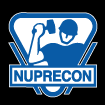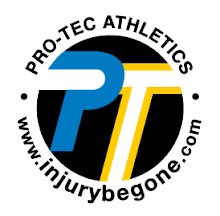So you need boots, eh? Boots? Yeah, sometimes soccer shoes are called boots. Not sure why. All the boots I own are for working, not running. Weird. Must be soccer talk.
Regardless, shoes are a really important part of the game for obvious reasons. Coach Bialek says that fundamentally soccer is a game about running. And he's right. There's a lot o' running going on in soccer. So choosing soccer shoes is important.
Will a $200 pair of shoes turn you into a soccer star? Nope. For that, you have to practice hard, eat right, and listen to your coach. And play alot of soccer.
Will a lousy fitting, poorly constructed pair of shoes potentially detract from your performance and enjoyment of the game? Yup. So here are some things to consider when buying your next pair of boots, cleats, shoes, etc.
Type
The type of shoe you want depends on the surface you’re gonna play on. There are different shoes for different surfaces – firm ground, hard ground, indoor, and turf. Here at Eastside FC we typically play on synthetic turf or regular ol’ grass. Two kinds of shoe fit the bill - firm ground shoes and turf shoes.
Firm ground shoes have cleats molded into the bottom of the shoe. They can be round or blade shaped. They are generally a good choice for both synthetic turf and grass. This is the type of shoe most of our players choose.
A firm ground shoe.
Turf shoes have durable rubber outsoles with patterns of studs arranged evenly across the bottom. They are designed for hard surfaces and synthetic turf. They’re a good choice for synthetic turf, but may not have the traction you need on soggy grass fields or wet/frosty synthetic turf.
A turf shoe.
Size – Get ‘Em Foot Friendly
Soccer shoes are supposed to fit snug to provide the best feel and control on the ball. Your shoe transfers the control inputs generated in your brain and through your foot onto the ball. Consequently, fit is the most important thing in choosing a shoe.
Ideally, your foot will feel comfortably snug all around with no pressure points. Snug does not mean uncomfortably tight, however. Take the time to try on several styles of shoe to find the one that fits your unique foot the best. Get a feel for which particular shoe is ‘foot-friendly’ to your little tootsies.
Length. Get a shoe that is close to the end of your toes, but not touching them. ½ of space between your longest toe and the end of the shoe is too much. ¼” is better. Your toes should not be scrunched up against the end of the shoe.
Width. You don’t want your feet sloshing around when you’re making a hard cut at full speed. Get a shoe that fits snugly and comfortably in the width.
Try ‘Em On. When you go to buy a shoe – take your socks, shin guards, and ankle protectors with you. Try on the shoe with this stuff on your feet.
Lace them up the way you would on game day.
Walk around in them. Better yet, run around in them. Ask your retailer if you can take them out for a spin. Run up and down the sidewalk. Find a little patch of grass if you can. A quality retailer wants you to make the right choice and should work with you to ensure just that. Take the time to try on several styles.
Material
The material used to construct your shoe affects fit, durability, and cost. Here are your choices:
Synthetic
Synthetic materials can be cheaper on the lower half of the quality range, but can be a good choice when feet are growing faster than the shoe will wear out. There are a number of good quality mid-range shoes featuring synthetics that are very popular and serviceable. There most expensive soccer shoes tend to be constructed from high technology materials that are very high performance with a corresponding high price.
Synthetic firm ground shoe.
Natural Leather
Leather shoes come in calf skin or kangaroo. Mid-range shoes will be made from calf skin. High quality leather shoes will feature soft kangaroo hide. Leather, in particular kangaroo, conforms well to the shape of your foot. It takes a few practices, but they will change shape to fit your foot almost as well as the very high end synthetic materials. Leather stretches a bit, so snugness when you buy them is important.
Kangaroo leather firm ground shoe.
Price
Firm ground shoes range from $25 - $200, depending on the quality of the construction and materials used.
Turf shoes range from $40 - $100, depending on the materials used in construction.
More on Gear
Care & Maintenance of Your Soccer Ball
Field Turf Maintenance































